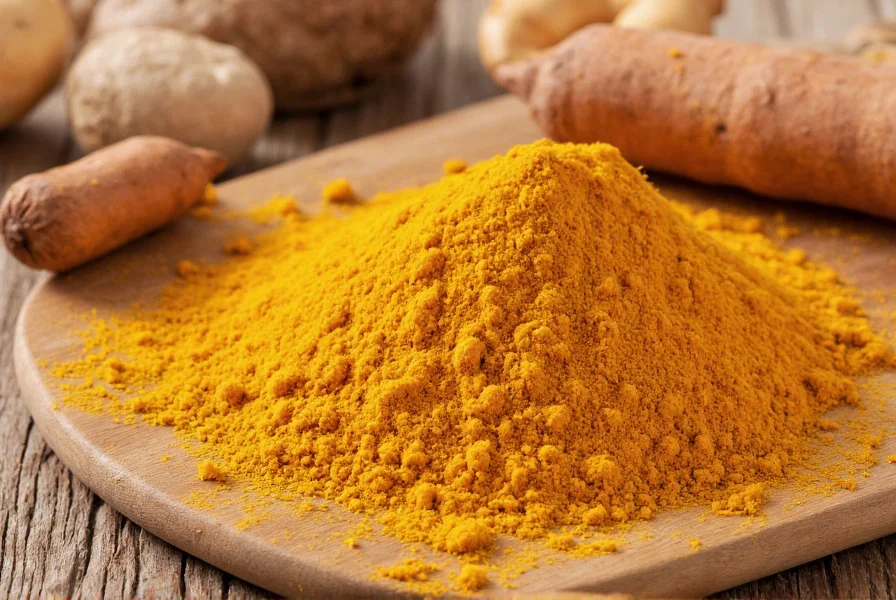For centuries, turmeric has been a staple in traditional medicine systems across Asia, particularly in Ayurveda and Traditional Chinese Medicine. Modern science is now validating many of these traditional uses, especially regarding turmeric's primary active compound: curcumin. This golden spice has moved from the kitchen cabinet to the research laboratory, with hundreds of studies examining its potential health benefits.
Understanding Turmeric and Its Active Components
Turmeric (Curcuma longa) is a flowering plant whose rhizomes are used to create the vibrant yellow-orange spice common in curry powders. While turmeric contains numerous compounds, curcumin represents only about 2-8% of most turmeric preparations yet accounts for most of its studied health benefits.
Curcumin's effectiveness faces a significant challenge: poor bioavailability. When consumed alone, curcumin isn't well absorbed into the bloodstream, rapidly metabolized, and quickly eliminated. This explains why traditional preparations often combine turmeric with black pepper (containing piperine) or fats, which significantly enhance absorption.

Evidence-Based Health Benefits of Turmeric Consumption
Scientific research has investigated turmeric's effects on various health conditions. The strongest evidence supports its anti-inflammatory properties:
| Health Benefit | Research Evidence | Recommended Application |
|---|---|---|
| Joint Health | Multiple studies show reduced pain and improved function in osteoarthritis patients | 500mg curcumin 2-3 times daily with meals |
| Inflammation Reduction | Curcumin lowers inflammatory markers like CRP and IL-6 | As part of balanced anti-inflammatory diet |
| Digestive Support | Promotes bile production and may reduce bloating | 1/2-1 tsp in cooking with healthy fats |
| Mood Support | Preliminary research suggests potential benefits for depression | Requires further human studies |
Practical Ways to Incorporate Turmeric Into Your Daily Diet
Adding turmeric to your diet doesn't require drastic changes. Simple dietary integration yields better long-term results than extreme short-term approaches:
- Morning golden milk: Heat 1 cup unsweetened milk (dairy or plant-based) with 1/2 tsp turmeric, 1/4 tsp black pepper, and a pinch of cinnamon
- Enhanced cooking: Add turmeric to soups, stews, rice dishes, and roasted vegetables (always with a fat source like olive oil)
- Smoothie booster: Include 1/4-1/2 tsp turmeric in fruit or vegetable smoothies with a tablespoon of almond butter
- Salad dressings: Whisk turmeric into vinaigrettes with olive oil and lemon juice
Optimizing Turmeric Absorption for Maximum Benefit
The key to experiencing turmeric's potential benefits lies in proper absorption techniques. Research consistently shows that combining turmeric with specific ingredients dramatically increases bioavailability:
- Black pepper: Piperine in black pepper can increase curcumin absorption by up to 2,000%. Always include a pinch of freshly ground black pepper.
- Healthy fats: Curcumin is fat-soluble. Consuming it with avocado, nuts, seeds, or olive oil improves absorption.
- Heat: Gentle cooking helps release curcumin from the turmeric matrix, making it more available.
For those considering supplements, look for formulations containing piperine or phospholipids (like Meriva®), which have demonstrated better absorption in clinical studies.
Safety Considerations and Recommended Dosage
While turmeric is generally safe as a culinary spice, higher therapeutic doses require consideration:
- Daily culinary use: 1-3 grams of turmeric powder (about 1/2 to 1 1/2 teaspoons) is considered safe for most adults
- Therapeutic supplementation: Research typically uses 500-2,000 mg of curcumin daily, divided into multiple doses
- Potential interactions: Turmeric may interact with blood thinners, diabetes medications, and certain chemotherapy drugs
People with gallbladder issues should consult a healthcare provider before increasing turmeric intake, as it may stimulate bile production. Those scheduled for surgery should discontinue high-dose turmeric supplementation at least two weeks beforehand due to potential blood-thinning effects.

Realistic Expectations for a Turmeric-Inclusive Diet
Despite popular claims, turmeric isn't a miracle cure. The scientific evidence shows modest but meaningful benefits, particularly for inflammation-related conditions. A balanced approach yields the best results:
- Turmeric works best as part of an overall anti-inflammatory diet rich in fruits, vegetables, and whole grains
- Benefits typically develop gradually over weeks or months of consistent use
- Individual responses vary based on genetics, health status, and overall diet
- Quality matters—choose organic turmeric from reputable sources to avoid contaminants
When evaluating turmeric diet claims, look for information grounded in peer-reviewed research rather than anecdotal reports. The most reliable benefits are seen with consistent, moderate consumption as part of a healthy lifestyle—not through extreme dietary protocols or unrealistic promises.
Frequently Asked Questions About Turmeric Diet
How much turmeric should I consume daily for health benefits?
For culinary use, 1-3 grams of turmeric powder (approximately 1/2 to 1 1/2 teaspoons) daily is considered safe. For therapeutic benefits, research suggests 500-2,000 mg of curcumin daily, always consumed with black pepper and healthy fats to enhance absorption. Consult your healthcare provider before starting high-dose supplementation, especially if you have underlying health conditions or take medications.
Can turmeric help with arthritis pain?
Multiple clinical studies indicate that curcumin, turmeric's active compound, can reduce pain and improve function in people with osteoarthritis. Research shows it may work similarly to some non-steroidal anti-inflammatory drugs (NSAIDs) but with fewer side effects. A typical effective dose in studies was 500 mg of curcumin taken two to three times daily. However, turmeric should complement—not replace—your current arthritis treatment plan.
What are the potential side effects of consuming too much turmeric?
While culinary amounts of turmeric are generally safe, excessive consumption may cause digestive issues like nausea or diarrhea. High doses may interact with blood-thinning medications, diabetes drugs, and certain chemotherapy treatments. People with gallbladder disease should use caution as turmeric may increase bile production. Always consult your healthcare provider before significantly increasing turmeric intake, especially if you have health conditions or take medications.
Why is black pepper important when consuming turmeric?
Black pepper contains piperine, which inhibits certain metabolic processes in the liver and intestines that would otherwise break down curcumin quickly. Research shows that adding just 20 mg of piperine (about 1/20th of a teaspoon) to curcumin can increase its bioavailability by up to 2,000%. This means your body can absorb and utilize significantly more curcumin when consumed with black pepper, making the health benefits more achievable through dietary intake.
Can I get enough curcumin from cooking with turmeric alone?
While cooking with turmeric provides healthful compounds, the curcumin concentration is relatively low (only 2-8% of turmeric by weight). To reach the 500-1,000 mg of curcumin used in many studies, you would need to consume approximately 1-2 tablespoons of turmeric daily—more than most people comfortably include in their cooking. For therapeutic purposes, some people choose standardized curcumin supplements, while others consistently incorporate turmeric into multiple daily meals along with black pepper and healthy fats to maximize absorption from dietary sources.











 浙公网安备
33010002000092号
浙公网安备
33010002000092号 浙B2-20120091-4
浙B2-20120091-4